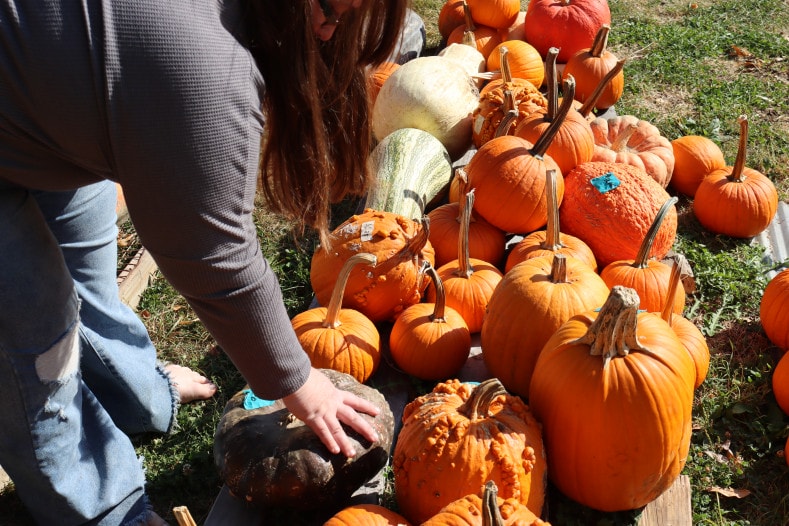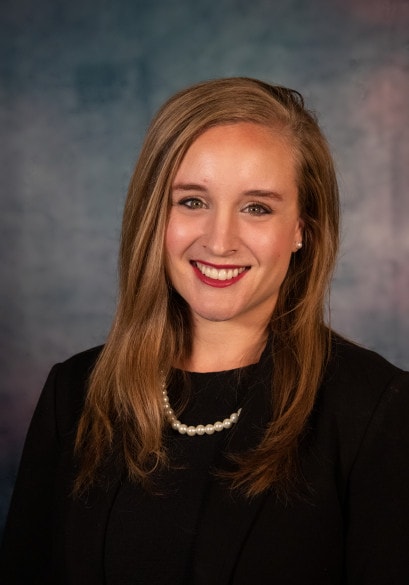Lunch Tray Education and Local Economics Missouri Farmers and Students Benefit From Farm to School Programs
Published October 12th, 2022 at 6:00 AM
Above image credit: Bri Orr sells her produce to schools, at farmers markets and from a farm stand in her front yard. (Cami Koons | Flatland)Education is at the core of Bri Orr’s mission with her small farm, the Heirloom Farm, in Pleasant Hill, Missouri.
When she had the opportunity to sell produce to a local school, it only made sense.
“The school just wants fun things for the kids to try,” Orr said. “They just want to expose the kids to all these different options that are available.”
According to national surveys by the U.S. Department of Agriculture, almost 70% of Missouri schools and early childhood development centers serve local food. Nearly 570,000 students in the state receive some form of local food at their schools.
Missouri’s Farm to School program allows producers big and small to partner with local schools. It helps the farmer have a reliable buyer, and it helps schools to provide fresh, local produce to students. The state recognized this partnership and recently declared October as Farm to School Month.
Farmer Benefit
Orr has only participated in the program for a couple of months, but she already appreciates having a stable buyer for her produce.
Normally when she harvests, she expects some will probably sell at the farmers market. Whatever is left, she has to can, preserve or use herself before it goes bad.
It’s a lot of work and uncertainty to manage. Now that she has the school program, she ends up with less produce left over to try and deal with.
“It is nice to have that outlet for spacing out the harvest so that I don’t have to be figuring out, ‘Okay, what do I do with these 75 pounds of all this stuff that I’m not going to eat’,” Orr said.

In 2021 the Missouri Grown program, under the Missouri Department of Agriculture, received a specialty crop block grant. The grant allows Missouri Grown to reimburse Missouri schools and early care and education centers up to $1,000 for the purchase of locally grown, specialty crops.
That’s how Orr, who grows primarily heirloom vegetables, got involved in the program.
“I tend to grow a lot of things that make people sort of look at it questioningly,” Orr said.
Adult customers are sometimes skeptical of trying something that looks weird, like pink celery or blue tomatoes. But Orr said the youngsters are always excited to try something funky looking.
“Kids are more likely to eat something that’s fun, and looks interesting, and smells good,” she said.
Since the school she partners with only has a budget for $1,000 of her produce, it doesn’t account for a lot of her business. Even so, it’s a partnership she aims to keep.
Orr values the exposure she’s providing the kids, and it’s nice to have a set place to take part of her harvest each week.
Taylor Tuttle, the Missouri Grown program manager, said one of the program goals was to facilitate relationships like this between growers and schools that could expand in the future.
“It’s another opportunity for (producers) to have income, it’s diversifying where their income is coming from and giving them another option,” Tuttle said.
Starting the Program
The farm to school concept has been around for a while, but Tuttle said it really expanded in 2017 when the Missouri Department of Agriculture started a farm to school task force.
It included folks like Tuttle and her colleague Lexi Jose, the farm to table program coordinator, along with representatives from Missouri Department of Elementary and Secondary Education, Missouri Department of Health and Senior Services and the University of Missouri Extension office.

While the task force is no longer active, these organizations still work together to connect Missouri producers to Missouri schools. Orr got in contact with the school she sells to through an email with Jose.
In addition to connecting farmers to schools, Jose helps to provide producers with information and training on how to sell to schools, and to expand those partnerships.
Some schools might be hesitant to buy locally for fear of it costing more, or being logistically more difficult.
Jose said she tries to remind folks that money spent locally supports their communities.
“Maybe the dollar isn’t the most beneficial aspect of doing a farm to school purchase, or the local purchase, but the other benefits, I feel, outweigh that,” Jose said.
Local support is a big factor in the Monett R-I school district’s farm to school participation.
Ralph Meredith, director of food service at Monett R-I schools in southwest Missouri, helped his district transition to regularly serve local fruits, vegetables and meats.
Monett is home to a Tyson chicken plant, which Meredith said the school proudly serves, along with beef donated from Missouri ranchers through the MO Beef Kids program.
MO Beef hangs posters in the schools with photos of the ranchers who have donated to the school so that students can see where their hamburgers or roast beef come from.
Meredith said school lunch menus highlight that the chicken is from the Tyson plant down the road and note anytime the produce came from a local farm.
“Our town is kind of proud that we have a Tyson’s company in town, and we have a lot of family members who work there,” Meredith said. “It gives us a little bit of pride to know that we’re using what comes from our hometown.”
Meredith said the school tries to buy local produce whenever possible and through a USDA Farm to School Grant has upgraded kitchen equipment to better prepare healthy, local foods.
“It allowed us to have that flexibility to be able to cook more products and be able to never have to ever say sorry, ‘We ran out,’” Meredith said.
Jose said many school kitchens are unequipped to cook whole foods like a squash, sweet potato or even meat, which can limit the types of produce a farmer can sell to the school.
Meredith said the kitchen advancements in his district allow for the preparation of healthier and better tasting meals.
Monett started a focus on sourcing locally in 2020 for a couple of reasons.
“We just found that price-wise, we save a little bit of money,” Meredith said. “It also allows our students and staff to see that we’re buying local.”
This can inspire students to buy locally as they become consumers, and it presents agriculture as a possible career path, Meredith said.
Lunch Education

Agriculture education is one of the biggest benefits of the farm to school program.
“For folks and young people to understand where that food comes from, and to be able to make that connection with the farmer or rancher who’s producing that food is really important to us,” Tuttle said.
Schools have to implement some education around the specialty crops they serve to qualify for the reimbursement program.
This month, Missouri, along with several other states, is competing in a “Crunch Off” to promote local produce and agriculture education in schools.
Just a few days into the competition, almost 100 Missouri schools have participated in the event by serving local produce to their students.
Participation thus far has totaled about $11,500 spent on local produce.
“It’s also a great way to share the story of agriculture with the next generation,” Tuttle said.
Cami Koons covers rural affairs for Kansas City PBS in cooperation with Report for America. The work of our Report for America corps members is made possible, in part, through the generous support of the Ewing Marion Kauffman Foundation.


